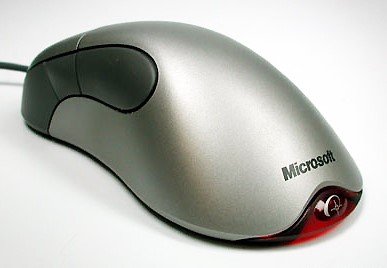Microsoft released the optical Intellimouse Explorer in 1999, marking a shift from ball based mice to optical tracking that changed computing forever. This innovation improved accuracy, ended the need for constant cleaning, and influenced gaming and everyday use, with its design still praised in 2025.
From Ball to Beam: Birth of Optical Tracking
The original Intellimouse launched in 1996 with a scroll wheel, but the optical version in 1999 ditched the ball for an LED sensor. This change meant no more dirt buildup or skipping cursors, making mice reliable on almost any surface.
Users quickly adopted it for work and play. Gamers loved the smooth tracking during fast movements in early titles like Quake and Counter Strike. Professionals found it boosted productivity without the hassle of mouse pads.
By the early 2000s, optical tech became standard, pushing competitors to follow suit. Microsoft sold millions, setting a benchmark for precision that shaped modern peripherals.

Ergonomic Design That Shaped Comfort
The Intellimouse stood out with its curved shape, fitting the hand naturally for long sessions. This focus on comfort reduced strain, a big leap from flat, boxy mice of the era.
Many users today credit it for sparking interest in ergonomic tools. Its asymmetric form, mainly for right handers, inspired ambidextrous options later on.
- Reduced wrist fatigue during extended use.
- Sculpted buttons for easy access without stretching fingers.
- Balanced weight for smooth gliding without extra effort.
This design influenced current models, like those with customizable grips.
Revolution in Gaming World
In 1999, gaming was growing, and the optical Intellimouse became a go to choice for players. It offered better response times than ball mice, giving an edge in competitive scenes.
Esports pioneers used it at events, where reliability mattered most. The mouse handled high speed actions without lag, helping in games that demanded quick reflexes.
A revival in 2018 brought back the classic model with updates, appealing to nostalgic gamers. Today, pros still reference its impact on aim accuracy and control.
The design paved the way for dedicated gaming mice with high DPI sensors.
Tech Advancements and Lasting Influence
Optical sensing from the Intellimouse led to laser and advanced sensors in today’s devices. It eliminated mechanical parts prone to failure, increasing durability.
Microsoft’s hardware push in the late 1990s showed how peripherals could drive PC adoption. The mouse helped transition computers from office tools to entertainment hubs.
| Year | Key Milestone | Impact |
|---|---|---|
| 1996 | Original Intellimouse with scroll wheel | Introduced easy scrolling for web and documents |
| 1999 | Optical Explorer launch | Ended ball cleaning, improved tracking on any surface |
| 2001 | Wireless version | Added freedom from cables, boosted mobility |
| 2018 | Classic revival | Reintroduced design with modern switches for gamers |
| 2025 | Ongoing tributes | Articles highlight enduring ergonomics in new tech |
These steps show how one mouse evolved an industry.
Challenges and Modern Comparisons
Not everything was perfect. Early optical models struggled on glossy surfaces, leading to laser upgrades. Some left handed users felt left out by the right handed bias.
Compared to 2025 mice with 8000 DPI and RGB lighting, the Intellimouse seems basic. Yet its simplicity wins fans who prefer reliable basics over flashy features.
Recent discussions online praise its build quality, with many still using vintage units. This loyalty highlights how good design outlasts trends.
Why It Still Resonates Today
In 2025, with AI driven tools and VR rising, the Intellimouse reminds us of foundational tech. Its story ties to current trends like sustainable hardware, as durable designs reduce waste.
Enthusiasts mod old units with new sensors, keeping the legacy alive. This mouse proves innovation can come from solving simple problems like a dirty ball.
Share your memories of the Intellimouse in the comments below, or pass this article to a friend who loves tech history. Your thoughts could spark more stories on classic gadgets.








